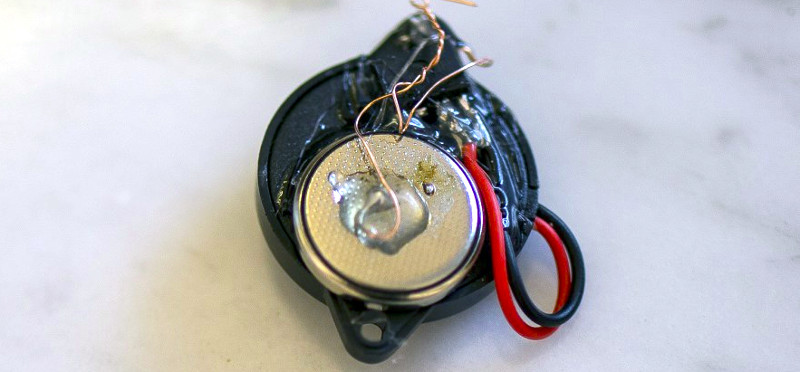If there is one educational institution that features on these pages more than any other, it may be Cornell University. Every year we receive a pile of tips showing us the engineering term projects from [Bruce Land]’s students, and among them are some amazing pieces of work. Outside the walls of those technical departments though, we suspect that cool hacks may have been thin on the ground. English Literature majors for example contain among their ranks some astoundingly clever people, but they are not known for their handiness with a soldering iron or a lathe.
We’re happy to note then that someone at Cornell who is handy with a soldering iron has been spreading the love. In the form of coin cell powered throwies that intermittently Rickroll the inhabitants of the institution’s halls of residence. We have few technical details, but they seem to be a simple affair of a small microcontroller dead-bug soldered to a coin cell and a piezoelectric speaker. If we were embarking on such a project we’d reach for an ATtiny of some description, but similar work could be done with a PIC or any number of other families.
The Cornell Daily Sun write-up is more a work of investigative journalism detailing the perplexed residents searching for the devices than it is one of technical reference. We’re pleased to note that the university authorities have a relaxed attitude to the prank, and that no action will be taken against the perpetrator should they be found.
Thus we’d like to take a moment to reach out to the Cornell prankster, and draw their attention to our Coin Cell Challenge competition. There is still time to enter, and a Rickrolling throwie would definitely qualify. This isn’t the first tiny Rickrolling prank we’ve shown you on these pages.
Thanks [Simon Yorkston] for the tip.















I too wish the details of the build were available.
(Not that I’d ever do something like that…)
B^)
Is it just square waves? Is it actually playing samples? Inquiring minds want to know.
Hopefully the hacker in question will show up with details.
The audio clip was horrible, so…
I’m guessing “yes” to your question.
“Jingle Bells” might have made a better sound with its distinctive timing.
It’s recognizable but infuriatingly it’s missing the last two seconds or so to make it a complete phrase from the song. Who ever made it must have ran out of space on the micro.
The purpose is to irritate, so it’s a very clever touch.
It is just square waves out a digital pin using analogWrite(). I do the same thing for a commercial product on an esp. Works better for alarm tones though. The imperial march test wav I used sounded like it was coming from an empty helmet so I guess that’s ok.
Hmm, Reminds me of
https://m.youtube.com/watch?v=dQw4w9WgXcQ
And here I was all ready to click on the link, and NOT get rickrolled!
B^)
I’ll try a reworded variant of the same question here as per another article comment post…
Can we just outright make our own custom size coin cells out of raw materials and sheets of anodes/cathodes salvaged from old pouch cells?
I’ve a plan on making a 10-inch diameter 2-inch thick coin cell packing… hopefully… 1,200Ah estimate at 3.2V nominal.
So….
by re-asking, you are actually rickrolling us with the question?
B^)
How about selling coin cell batteries with rickroll feature built in?
Come on, Cornell…!
Some really interesting opportunities to develop tech to track it down. Even the slowest-moving robot would be a great way to echo-locate the source. Or triangulate with computers and cheap (webcam) mics…Although I’m guessing USB is not time-accurate enough to triangulate sound?
9 seconds of sound with a random ~30 minute delay. If the room they were placed in was dead quiet it’d be easier.
After Rick Astley passes on to the great beyond…
I can just see someone placing a solar powered device on his tombstone that will play that song over and over and over and over
Rickrolling his relatives until the solar orb burns out? Have some compassion, man!
Dunno, I rather like the ditty, myself. :)
I made five of these, so good!